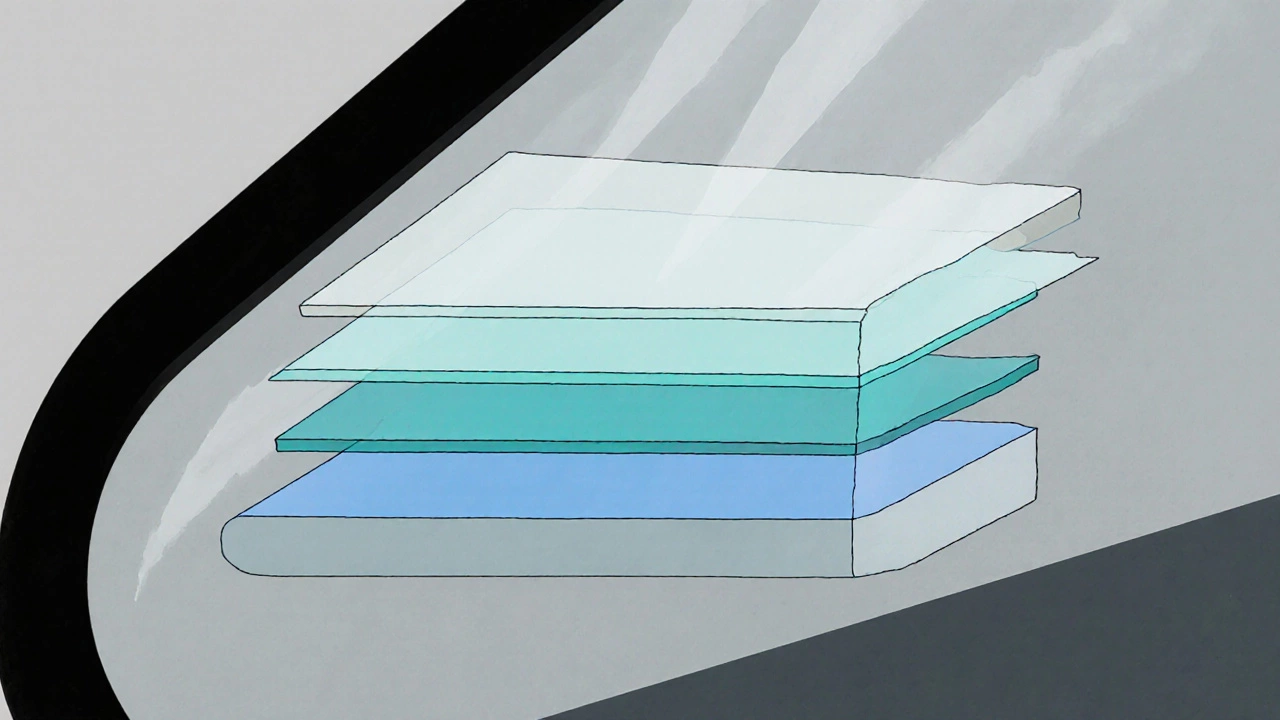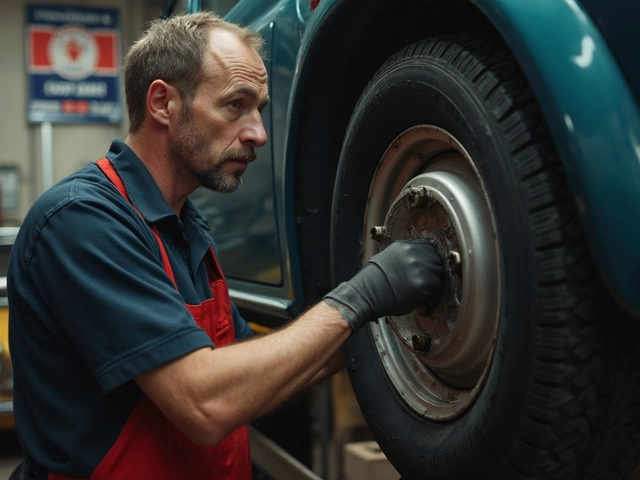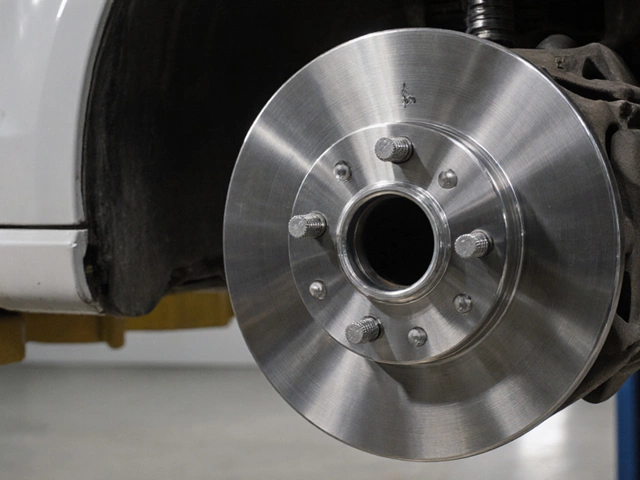Window Tint Washing Calculator
When Can You Wash Your Car?
Calculate the safe waiting time after window tint installation based on time elapsed and environmental conditions.
Quick Takeaways
- Wait 24‑48 hours for most tint films before the first wash.
- Use a gentle pH‑balanced car wash soap and a soft mitt.
- Avoid high‑pressure jets on the tint for the first week.
- Hand washing is safest; automatic tunnels can be okay after the cure period.
- Regular cleaning with a proper glass cleaner extends tint life.
When you window tint is a thin, adhesive‑backed film applied to car windows to cut glare, heat and UV exposure, the first question that pops up is: wash car after tint - is it okay? The answer isn’t a simple yes or no; it depends on how fresh the film is, what cleaning method you choose, and how careful you are with chemicals. Below we break down everything you need to know, from the chemistry of the film to a step‑by‑step safe washing routine.
What Exactly Is Window Tint?
Window tint isn’t just a dark slice of plastic. Modern Tint film consists of multiple layers - a polyester base, a UV‑blocking coating, a scratch‑resistant topcoat, and a pressure‑sensitive adhesive. When the installer applies the film, the adhesive is activated by heat and begins a curing process that locks the layers together and bonds them to the glass.
The curing stage is where most washing myths originate. The adhesive needs time to reach full strength, and during that window the film is vulnerable to splashes, high‑pressure water, and harsh chemicals that can lift edges or create bubbles.
How Long Does Tint Need to Cure?
Most professional installers recommend a 24‑ to 48‑hour waiting period before the first wash. The exact time varies with:
- Film type - acrylic‑based adhesives cure faster than urethane.
- Ambient temperature - warmer conditions speed up chemical bonding.
- Humidity - high humidity can slow cure and trap moisture under the film.
If you live in Brisbane’s subtropical climate, you’ll usually hit the 24‑hour mark quickly, but a rainy weekend might push it to 48 hours.
What Can Go Wrong If You Wash Too Soon?
Jumping the gun can cause three main issues:
- Edge lifting: Water pressure forces water under the film’s edges before the adhesive fully bonds, creating bubbles or peeling.
- Staining: Some soaps contain solvents that can discolor the Hydrophobic coating a water‑repellent layer designed to keep rain off the tint. Stains become permanent if not removed quickly.
- Scratch formation: Abrasive particles trapped in the cleaning mitt can scratch the topcoat during a rushed wash.
Safe Washing Practices - When and How
Follow these steps to protect your tint while keeping the whole car sparkling:
- Wait the recommended cure time: 24‑48 hours is the industry standard. Mark your calendar the day the tint is installed.
- Choose the right soap: Opt for a pH‑balanced car wash soap (around 7.0). Avoid dishwashing liquids, bleach, or ammonia‑based cleaners.
- Use a soft microfiber mitt: A dedicated glass mitt reduces the risk of scratching the topcoat.
- Rinse gently: Start with a low‑pressure hose or bucket of water. No high‑pressure jets until the film is fully cured.
- Dry with a non‑abrasive cloth: Microfiber towels or a clean chamois work best. Pat, don’t rub.
For the first week, keep a Pressure washer a device that delivers water at 1,500‑2,500 psi, commonly used for heavy‑duty cleaning off‑limits. If you must use one, set it to the lowest pressure and angle the nozzle away from the glass.
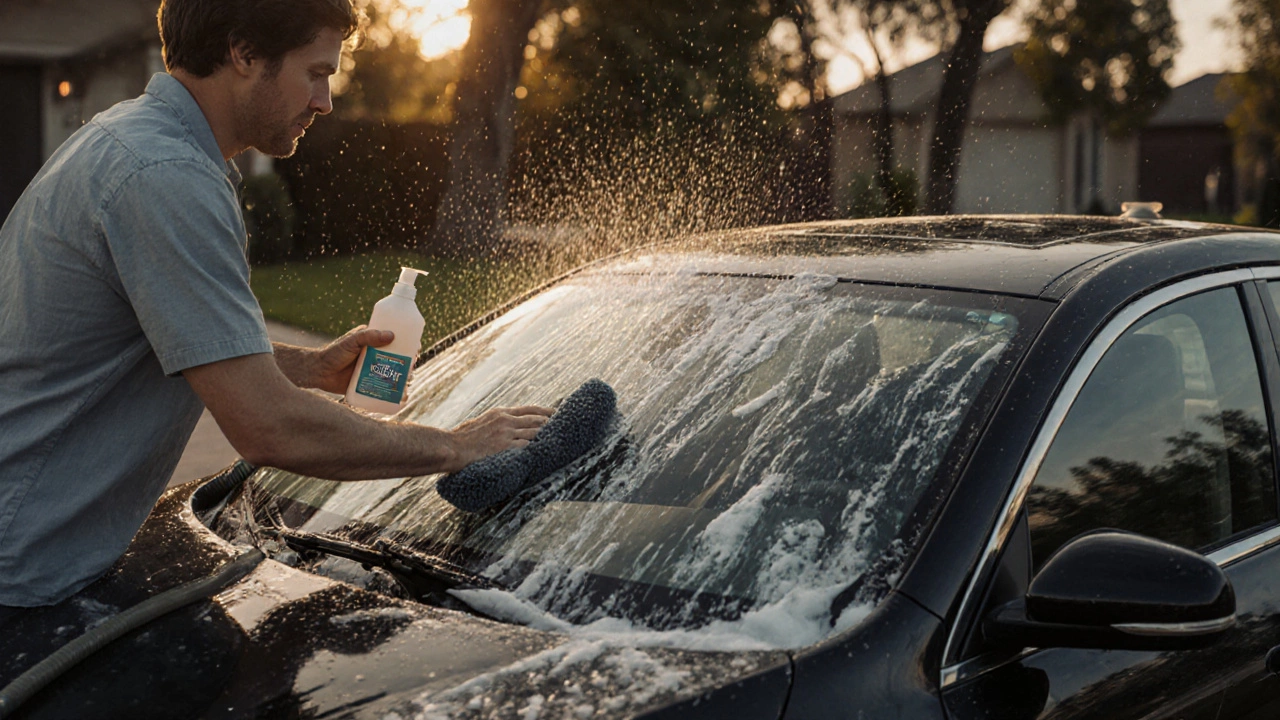
Hand Wash vs. Automatic Car Wash
After the cure period, both methods become viable, but each has pros and cons for tint owners.
| Aspect | Hand Wash | Automatic Car Wash |
|---|---|---|
| Control over pressure | Full control - low pressure, gentle motions | Varies - many use high‑pressure brushes that can stress the film |
| Cleaning agents | You choose pH‑balanced soap | Often uses strong detergents; might contain waxes that affect UV coating |
| Time investment | 15‑30 min for a typical sedan | 5‑10 min, but you’re trusting the machine |
| Risk to tint | Very low if you follow the steps above | Low to moderate - choose a “touch‑free” tunnel with soft foam brushes |
If you have a Tint warranty a guarantee from the installer or film manufacturer covering defects and premature failure, check the fine print. Some warranties void if you use an automatic wash within the first month.
Maintaining Tint Longevity
Beyond the first wash, keeping the film in top shape is simple:
- Clean the glass regularly with a dedicated glass cleaner that’s alcohol‑free.
- Apply a spray‑on Hydrophobic coating a nano‑layer that enhances water beading and reduces streaks every 6‑12 months for extra protection.
- Avoid parking under prolonged direct sunlight; use a car cover if possible.
- Inspect the edges every few months for any signs of lifting; catch problems early.
Common Myths Debunked
Myth 1: "You can wash the car any time after tint is installed." False. The adhesive needs time to cure; washing too soon can permanently damage the film.
Myth 2: "All soaps are safe for tint." Not true. Ammonia‑based cleaners can fog the UV coating, leaving a haze.
Myth 3: "Automatic car washes are always safe after the first week." Depends on the type of tunnel. Touch‑free tunnels with soft foam are usually fine; brush‑type tunnels can still cause micro‑scratches.
What to Do If Your Tint Gets Damaged
If you notice bubbling, peeling, or a cloudy spot after a wash, act quickly:
- Stop washing that window and let it dry naturally.
- Contact the installer - many offer a free assessment within the warranty period.
- If the damage is minor, a professional can re‑apply a small patch of film without replacing the whole window.
Prompt action often saves you from a full replacement cost.
Bottom Line
Yes, you can wash your car after window tint, but the timing and technique matter. Give the film at least a day or two to cure, use gentle, pH‑balanced products, and avoid high pressure. When you follow these steps, the tint stays crystal clear, the UV protection lasts longer, and you keep that sleek look without extra expenses.
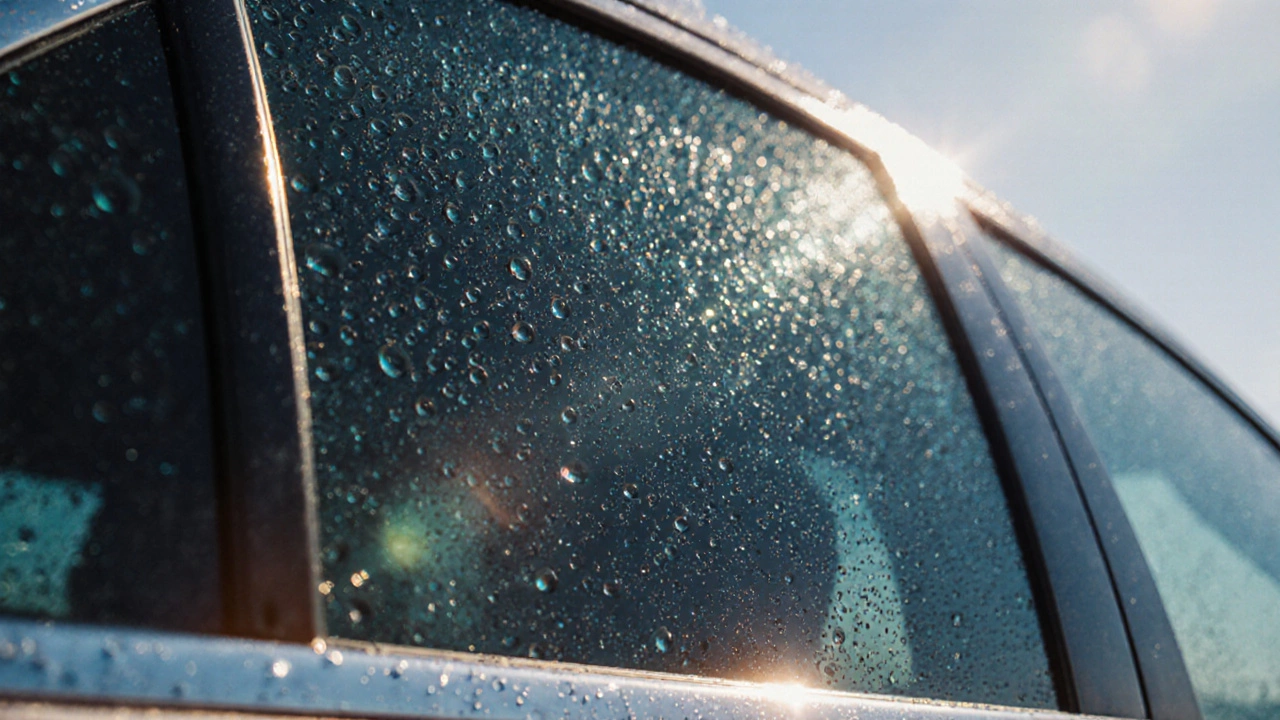
Can I use a regular household detergent on tinted windows?
No. Household detergents often contain acids or solvents that can damage the UV coating and the hydrophobic layer. Stick to a pH‑balanced car wash soap designed for automotive glass.
How long should I wait before using an automatic car wash?
Wait at least 48 hours, and preferably a full week before entering a tunnel. If the tunnel is touch‑free with soft foam, you can consider using it after the first 48 hours.
Will a pressure washer ruin my new tint?
During the curing period, yes. High pressure can force water under the film and lift the edges. After the film is fully cured, low‑pressure rinses are safe.
Does rain affect fresh tint?
Light rain is generally okay, but avoid heavy downpours that hit the glass at high speed. If rain does hit, dry the windows gently with a microfiber cloth once the film is cured.
What signs show that my tint needs professional attention?
Look for bubbling, edge lifting, discoloration, or a hazy appearance after washing. Any of these indicate the adhesive or coating was compromised and should be checked by a tint specialist.

